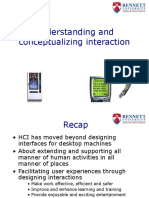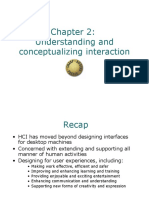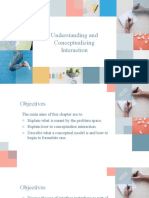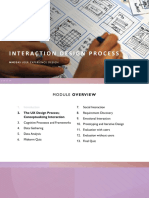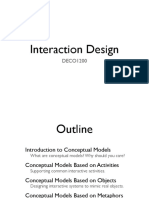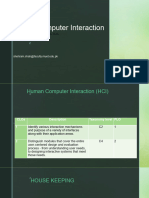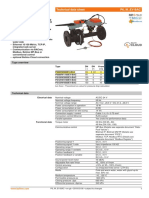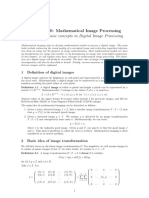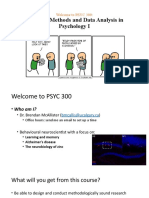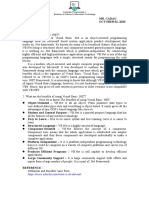0% found this document useful (0 votes)
118 views38 pagesP05 - Understanding & Conceptualizing Interaction
The document discusses conceptual models for human-computer interaction. It describes how conceptual models help users understand a proposed system by describing what it will do, how it will behave, and what it will look like. It provides examples of conceptual models based on activities like giving instructions, conversing, manipulating objects, and exploring. Direct manipulation and conversational interfaces are discussed as examples. The document also covers conceptual models based on objects and interface metaphors. Understanding conceptual models helps inform the design of interactive systems.
Uploaded by
Fandi Adi PrasetioCopyright
© © All Rights Reserved
We take content rights seriously. If you suspect this is your content, claim it here.
Available Formats
Download as PPTX, PDF, TXT or read online on Scribd
0% found this document useful (0 votes)
118 views38 pagesP05 - Understanding & Conceptualizing Interaction
The document discusses conceptual models for human-computer interaction. It describes how conceptual models help users understand a proposed system by describing what it will do, how it will behave, and what it will look like. It provides examples of conceptual models based on activities like giving instructions, conversing, manipulating objects, and exploring. Direct manipulation and conversational interfaces are discussed as examples. The document also covers conceptual models based on objects and interface metaphors. Understanding conceptual models helps inform the design of interactive systems.
Uploaded by
Fandi Adi PrasetioCopyright
© © All Rights Reserved
We take content rights seriously. If you suspect this is your content, claim it here.
Available Formats
Download as PPTX, PDF, TXT or read online on Scribd
/ 38


